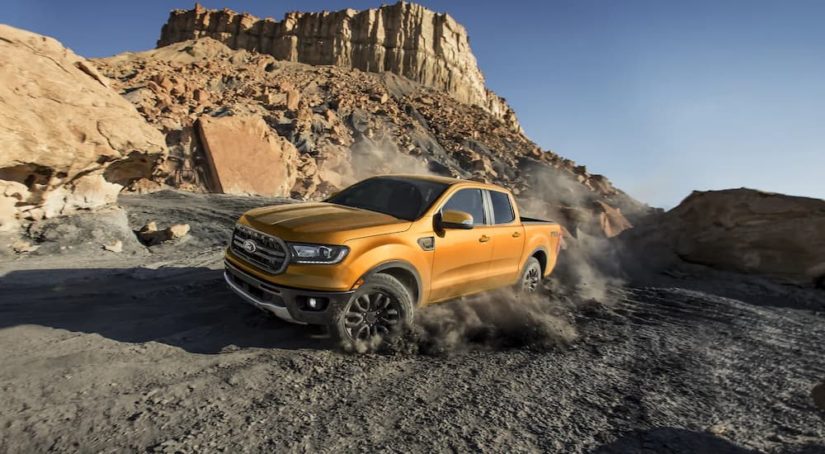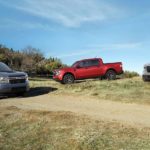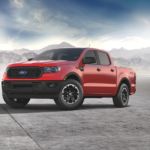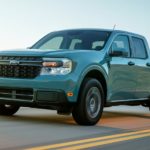Are you on the hunt for a mid-size pickup truck that has off-road capability and isn’t a Toyota Tacoma? You may be in luck because lurking behind the bushes and making a low, gurgling exhaust sound is the 2022 Ford Ranger. The mid-size pickup truck market has been on fire over the last few years. The field has been dominated by the Tacoma, but some offense by Chevrolet, with the Colorado, and Nissan, with the Frontier, has put a noticeable goal or two in Toyota’s net. Ford spied this and, in 2019, brought back the Ranger, completely redesigned for the American market. With a brand new model set to hit dealerships within the next year, it may be your final opportunity to buy the generation that put Ford back in the mid-size pickup game.
A Truck for Suburbia
The Japanese may have invented the minitruck, but it was us Yanks who beefed it up and brought it into suburbia. Automakers began to take note in the late ‘70s and early ‘80s that smaller trucks were becoming a more familiar sight in urban centers and suburban neighborhoods. These were the streets that inspired the original Ranger.
Launched in 1983 as the middle child between the F-150 and the Courier, Ford’s minitruck of the ‘60s and ‘70s, the Ranger was initially marketed to those who could certainly use a pickup but didn’t necessarily need a full-size taking up their driveway. A trip to the garden center, the hardware store, or the lumber yard was the Ranger’s bread and butter, and this was how the Ranger remained well into the 2000s. The ‘90s saw some fun, speedy models with the Splash and Lightning trims, but it was in the suburban driveway where Ranger was most at home.
However, in 2011, with the increasing popularity of the Tacoma and Colorado and Ford’s seeming unwillingness to provide the Ranger with an updated interior – it’d been the same since 2005 – sales had sunken to the point where Ford decided to pull the plug. The Ranger was gone…or was it?
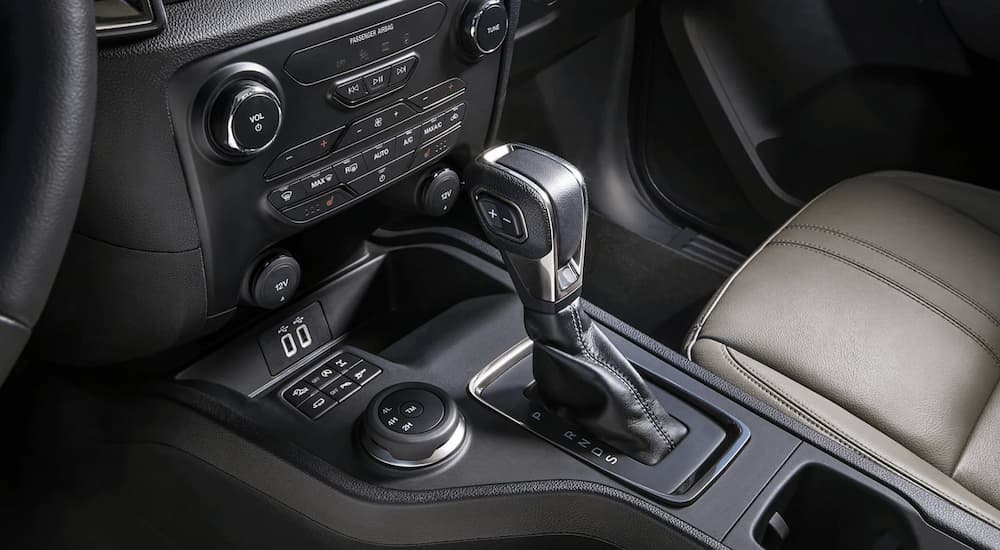
Where Have All the Rangers Gone?
Across the world, Ford was still selling boatloads of Rangers, primarily as work trucks for businesses and governments. But when Chevrolet launched the redesigned Colorado in 2015, it appeared that a new player had taken the field to challenge the Tacoma, and Chevrolet was succeeding. Well, Ford couldn’t have that. Still, the Blue Oval sat and watched for nearly four years before finally deciding it was time to bring back the Ranger.
Ford looked to Australia, whose population had been dutifully buying Rangers for years as work and play vehicles, as the testing ground for a new truck. A truck that could take on the Outback could certainly take on American trails. And, in 2019, we got a completely different Ranger from the one that’d left us in 2011. It was bigger, more muscular, and created with adventure on its mind.
The Return
The Ranger was back! Branded as a lifestyle truck, the Ranger is being marketed by Ford as direct competition to the Tacoma. It’s easy to see why. The two trucks are similar in many ways. Both are manufactured by automotive giants with pedigrees for tough, reliable vehicles. Both are aimed at buyers who want to use their trucks as an extension of their lust for adventure and fun. The main difference? Tacoma never went away. Ford had a lot of ground to make up with the Ranger’s return, and the truck needed to be really excellent in capability in order to compete.
So what did we get? We got a unibody, steel frame truck that’s available as either a SuperCab with a 6’ bed or a SuperCrew four-door with a 5’ bed across three trim levels: XL, XLT, and Lariat. The wheelbase of the Ranger is 126.8” and has 8.9” of ground clearance, making it an acceptable size and height for off-roading. The 2.3L Ecoboost Turbo engine, the only in its class, puts out 270 hp and 310 lb-ft of torque. Certainly enough power to conquer a hill and tow up to 7,500 lbs.
The Siblings: FX2 & FX4
But what about off-roading?! Can we get to that now, please? Yes, yes, we can. The Ranger comes available with three different package options for off-roading: FX2, FX4, and the Tremor. We’ll start with the FX2.
This is designed as an entry-level off-roader, providing just enough to get you over the tough stuff but not much else. Available on only 2WD models, the FX2 package provides off-road tires and an electronic-locking rear differential, which locks the rear axle and allows for more traction. The suspension is also tuned up to manage bumpier terrain, and the dash provides information on pitch and steering angle.
Things get more serious with the FX4 package. This is Ford’s 4WD package integrated with off-roading features. The suspension is tuned with monotube shocks and all-terrain tires, while the rear differential locks the same as it does with the FX2 package. Heavy-duty skid plates protect the transfer case, fuel tank, and electronic power steering motor. The FX4 package also comes with Ford’s suite of off-road tech, but we won’t get to that just yet. We need to talk about the Tremor first.
The Tremor
Launched in 2021, the Tremor is a premium Ranger in that it’s a special package you can only get as a SuperCrew 4X4 on an XLT or Lariat trim. Oddly specific, but we’ll roll with it. Ford has put some effort into the Tremor’s appearance, adding front and rear tow hooks, Magnetic-painted alloy wheels and 32” off-road tires, 9.7” of ground clearance, and the option of adding a graphics package that includes red nostril flares for the front grille.
Inside, you’ll find Tremor embossed in red on the suede cloth front seats, a leather-wrapped steering wheel, and six auxiliary switches integrated into the dashboard. Essentially, Ford is encouraging you to add auxiliary features, like light bars or a winch, to your Ranger to aid in your adventures. Below deck, the front and rear suspension are beefed up with FOX 2.0 monotube dampers, which are exceptional for off-road driving.
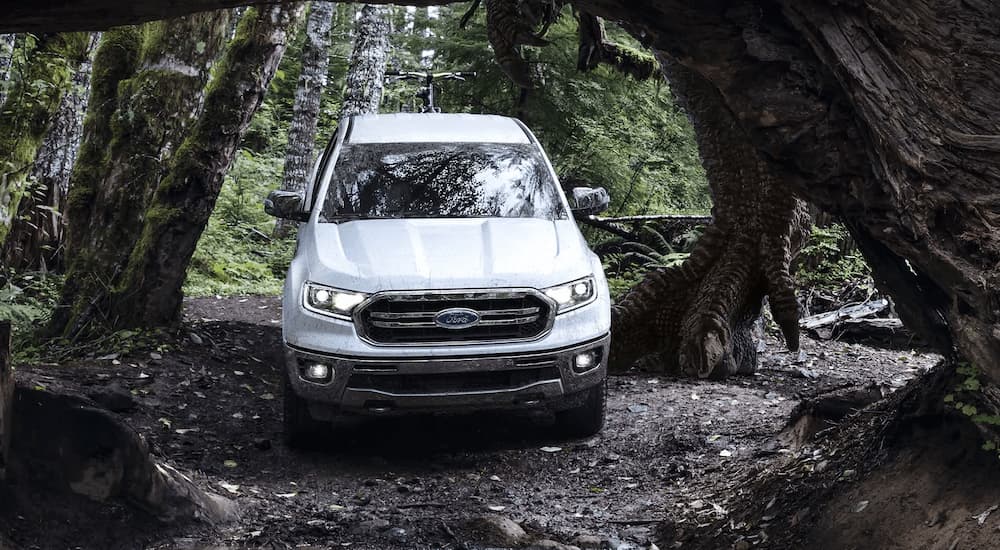
The Tech That’ll Get You There
Okay, now we’ll talk about tech. Both the FX4 and Tremor packages come equipped with both of Ford’s off-roading technology suites: Terrain Management and Trail Control.
Terrain Management does exactly what you think it does: it literally manages Ranger’s reaction to the driving terrain. There are four drive modes to choose from: Normal, Grass/Gravel/Snow, Mud/Ruts, and Sand. Each level is designed to provide the maximum amount of traction and control on the given surface. Say you’re zooming across a wet field and find yourself in a muddy patch. Switch the system into Mud/Rut, and the onboard computers will calculate where traction is needed based on the information they’re getting from the wheels and the drivetrain. You still operate the speed and steering.
Trail Control, on the other hand, is off-road cruise control. Activated by you, the driver, Trail Control works both up and down hill. You set the speed you want to go, and the truck does the rest. This time the engine, computers, and rear differential work in tandem to get you over the tough terrain. You only need to worry about steering. Integrated into the dash are pitch and steering angle monitors that will help you gauge where you want to point the truck next. It’s a smart system that has proven itself worthy over the last three years, so much so that Ford uses it as a base for its G.O.A.T. modes on the new Broncos.
It’s Time to Get a Ranger to Take Off-Road
Have we convinced you of the Ranger’s worthiness for adventure? The new trucks are a far cry from the small, weekend warriors that built the segment, but they work for what a mid-size truck is today. This vehicle class is much more about lifestyle choice than it is about getting a job done. How you live your life is important, and your vehicle should reflect that by being able to keep up with you.
